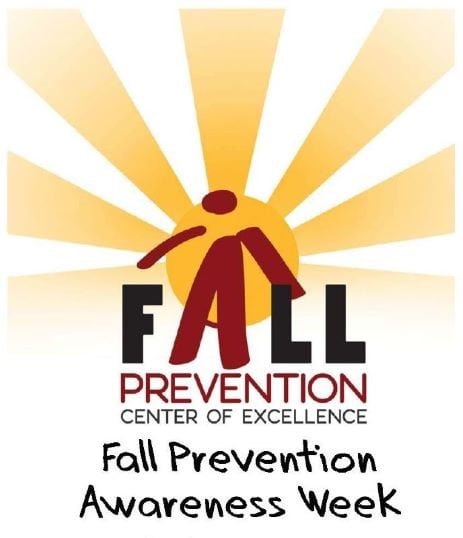September 22nd, 2018 marks the first day of the Fall season but it also marks the start of Fall Prevention Awareness Week.
Falls are the leading cause of injuries, traumatic deaths, and traumatic hospital admission among adults aged 65 and older. Falls can dramatically reduce a person’s quality of life and independence
Falls can result in a large variety of injuries ranging from minor bumps and bruises to more serious injuries such as brain bleeding, hip fractures, arm/wrist/leg/ankle fractures, and rib fractures (which can contribute to collapsed lungs/lung contusions). The more you know about fall prevention, the safer you can be.
The most common risk factors for falls include age related physical changes and often times the medications used to treat those conditions. People who are taking blood thinners may be at risk for more serious injuries related to falls. Schedule an appointment with your primary physician to discuss your individual risk factors.
According to FAQ’s on the stopfalls.org website, approximately 55% of falls occur inside the home, with another 23% occurring outside, but near the home (in the yard, on the porch, etc.) which accounts for 78% of all falls. This means that your home is a danger zone in terms of falling and we should do everything we can to make it safer
In the home, people are most likely to fall:
- in living rooms (31%)
- bedrooms (30%)
- kitchens (19%)
- bathrooms (13%)
- hallways (10%) (
Additionally, stopfalls.org reports the following ways to help safeguard your home:
How can we safeguard our homes to minimize the risk of falls?
- Secure loose rugs with double sided tape/slip resistant backing – if possible, remove loose rugs from your home
- Move end tables, plant stands, etc. from high traffic areas
- Remove boxes, newspapers, and cords from walkways
- Keep frequently used items within easy reach
- Immediately clean spilled liquids from floor
- Use non-slip mats in the bathtub/shower
- Keep your home well lit
- Make sure paths to the light switches are clear and free from clutter
- Turn lights on before going up or down stairs
Other tips to help reduce falls include:
- wearing shoes or non-slip socks
- participate in routine physical activity such as walking, water aerobics, or other activities that improve strength, balance, flexibility, and muscle strength
- correctly use assistive devices (such as a walker/cane) as needed
Visit stopfalls.org for additional information and resources about Falls Prevention Week.





